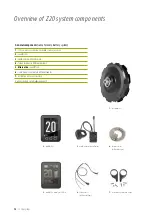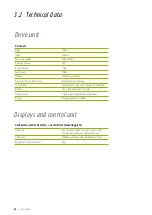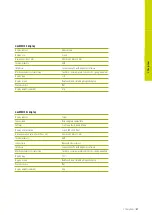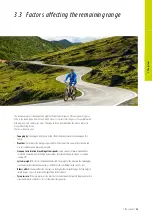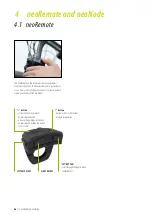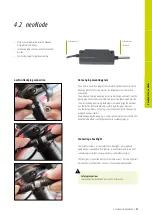
0
20
40
60
12
//
1 Introduction
The torque of the mid-motor can be greatly reduced
by the transmission ratio.
Small transmission ratio
Large transmission ratio
* At a speed of 18 to 25 km/h.
Tor
qu
e [
Nm
]*
neodrives Z20
Average mid-motor
1.3 The torque myth
The rear motor has a transmission-independent performance
When comparing the data sheets of mid-drive motors you will find values of up to 90 Nm
torque. This does not mean that mid-drive motors are more than twice as powerful as the
neodrives rear motor. The torque that actually reaches the rear wheel from the mid-drive motor
is significantly influenced by the gear selection. With a gear ratio of, for example, a 38-tooth
chainring and a 19-tooth pinion – i.e. a range mostly used by the majority of riders – the torque
on the rear wheel is already halved. Furthermore, internal gear hubs especially cannot withstand
high torques continuously, which is why mid-drive motors are throttled ex works. Another
drawback: with the high torque the chain is put under a lot of strain, which drastically reduces
its life expectancy.
Our tip:
Test ride all systems. You will hardly notice a difference in power when comparing high-quality
mid-drive motors with the neodrives rear motor. Thanks to the position of the motor in the rear
wheel, the rear motor even seems to be significantly more powerful.
As mentioned earlier, the maximum torque of 40 Nm is always fully available to the rider,
regardless of the gear selection. With the mid-motor the torque is reduced by the gear selection
in such a way that only approx. half of the torque arrives at the rear wheel.


















